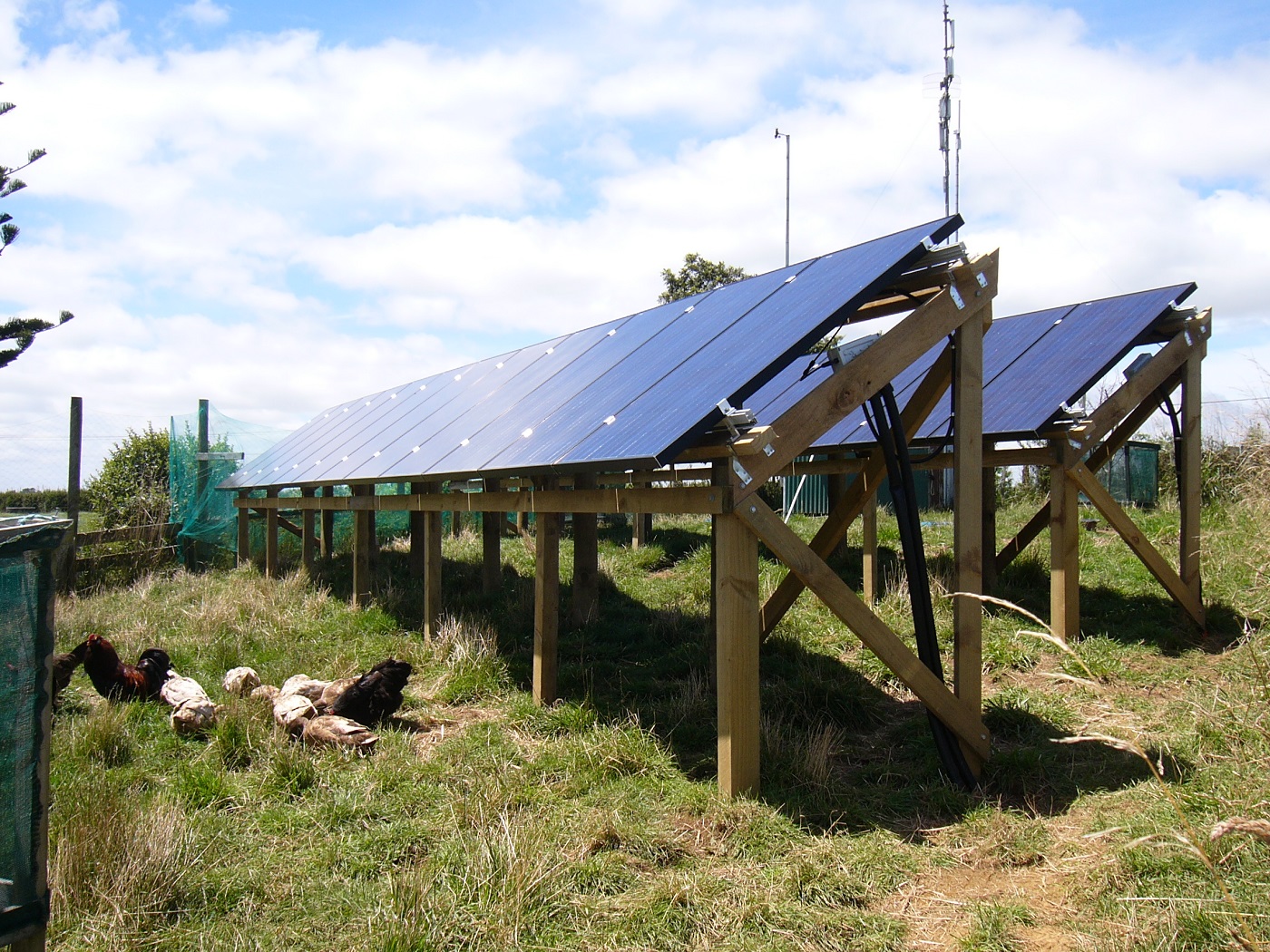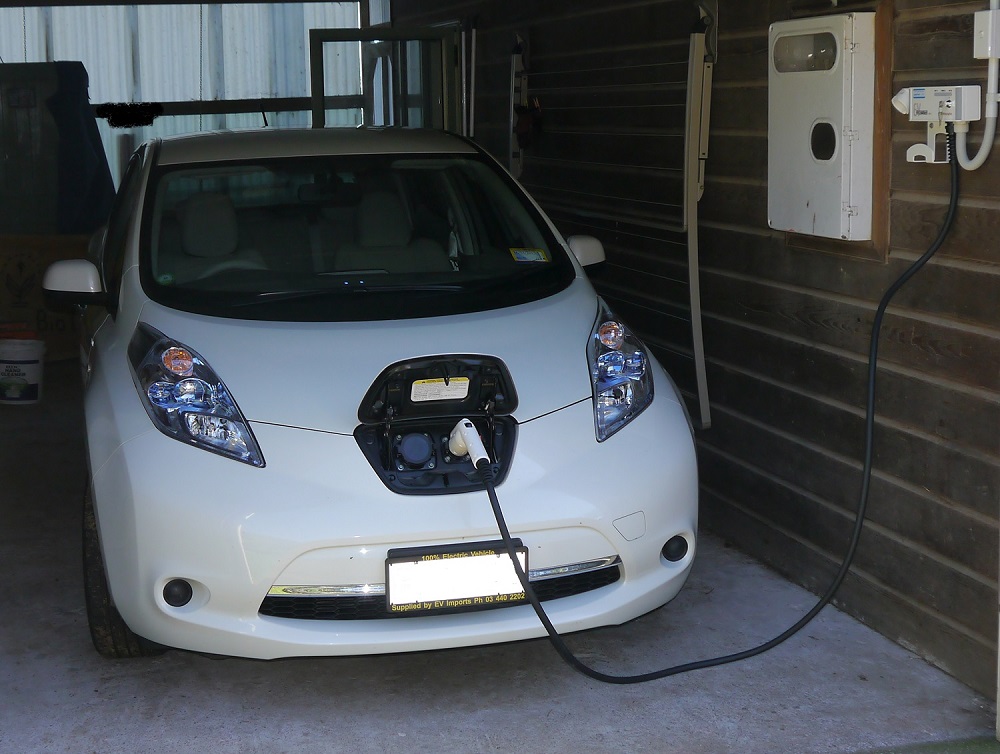Talking About Solar Power
Sunday 21 June 2015
Like an increasing number of New Zealanders we have invested in a photovoltaic (PV) installation which provides us with electricity for home use. In our case it is 'grid tied' allowing us to sell what we don't use to our energy provider by 'exporting' it to the national grid, and when we require more than our PV is producing at any given time we can import electricity from the grid in the same way as any other power customer. Our installation's maximum output is about 6kW providing an annual output of around 7,300 kWh (units).

We have no battery storage (apart from that in our electric car, but more on that later) so are essentially using the national grid as our 'battery'. However over the past 3 years since we installed our PV the economic efficiency of the grid as a storage medium has dropped as our electricity supplier (Meridian) has drastically reduced the price which they pay us for exported electricity. The latest reduction from the original 1:1 (import vs. export) rate will see that ratio become about 4:1, which in effect means that every 4 units (kWhs) we export will pay for 1 unit imported during the 7 'summer' months (Oct - Apr), and 3:1 for the remaining 5 months of the year. There are prompt payment discounts and other variables but from July 1st that's pretty much the crux of it.
About a year ago and following the previous reduction in 'buy back' rates we researched electric vehicles (EVs) and decided to purchase a Nissan Leaf. These cars are 100% electric, unlike a hybrid which is essentially a petrol or diesel vehicle with a part-time electric drive system. The Leaf's sole energy source is from a 24 kWh Lithium-Ion battery that is charged from a 240V power supply which in our case is often derived from PV generation. So, quite often our Leaf is literally running on sunshine!

The Leaf's battery provides us with up to 120km of driving between charges which varies depending on factors such as speed driven, road gradients and number of passengers. At retail electricity rates that equates to an energy cost of less than 5c/km but with a lot of our recharging done via PV the actual cost to us is arguably a lot less, and in any case the vehicle maintenance costs are also far lower than that for an internal combustion powered car due to the Leaf's virtually maintenance free motor and drive set-up. We have retained our 12 year old Commodore for occasional out of province trips and trailer towing but with fuel costs alone of close to 25c/km it understandably is now very much a second vehicle and spends much of the time parked up.
As mentioned earlier the Leaf provides us with the potential to store a significant portion of our 'excess' PV generation rather than exporting it for a meagre return. Our home based business together with Maggie's employment allowing her some telecommuting days allows us plenty of opportunity for daytime charging which obviously helps in this respect. 'Self consumption' of electricity from PV is the key to maximising the economic viability of self generation as this consumption offsets electricity that would otherwise be imported therefore effectively providing you full retail price (including GST) for that portion of your generation. By scheduling tasks such as laundry, (machine) dishwashing, power tool use, and of course EV charging to daylight (generating) hours we presently consume between 35% - 45% of our generation, on a monthly basis.
From our experience some final relevant points:
- If your property can accommodate it consider ground mounting of PV. This enables easy maintenance and potentially optimal panel orientation.
- Dirty or partially shaded PV panels significantly reduce generation. Keep them clean and any offending trees trimmed.
- If you have 3-phase electricity supply (as we do) note that only those household circuits on the phase that your PV exports through are able to 'self consume' your generation. Perhaps reallocate circuits on phases in this regard, or for new installations of 5kW or more consider using two inverters (e.g. 2x 3kW vs. 1x 6kW) on separate phases, with an export meter on both phases.
- Choose your power supplier carefully as the two previously 'PV friendly' power co's (Meridian or Contact) may not necessarily be the best choice in your particular situation as buy-back rates drop.
- Presently grid tied installations do not allow you to use your own generation in the case of a grid outage, except for more complex installations that include storage facility (batteries) and an 'islanding' ability. This is a safety measure to protect lines maintenance staff from 'stray' generation on presumedly dead lines.
The electricity supply and generation environment is evolving rapidly and products for domestic storage of output from PV and other microgeneration systems, such as Tesla's recently announced Powerwall, will present us with opportunities to far better utilise our self generation. Also as EVs gain popularity the charging infrastructure is growing internationally, as it will in New Zealand also. It will be interesting to see how our electricity supply companies react to these dual challenges to their current business model.

